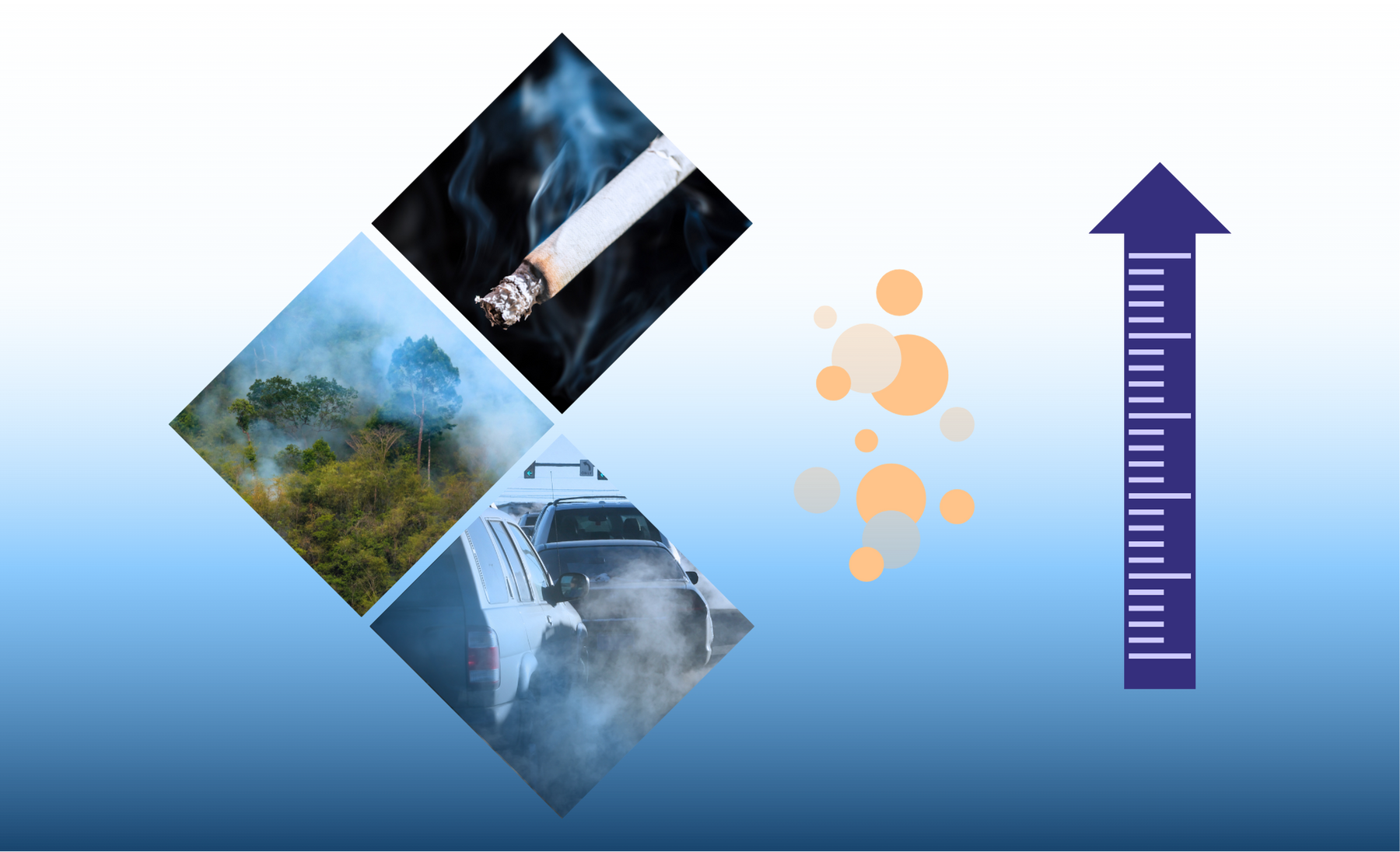Fifty years ago, outdoor air quality in the U.S. was abysmal. (Water was no better– those were the days of the infamous “Burning Cuyahoga River” in Cleveland.) Major cities were shrouded in brown bubbles of pollution that could be easily seen as you approached on the ground or air.
This poor air quality significantly damaged people’s health and shortened life expectancies.
The advent of the EPA and passage of the Clean Air Act produced major improvements in outdoor air quality. But now, climate change is beginning to reverse these gains with implications for indoor air quality.
The clean air progress that we’ve made
The Clean Air Act empowered the EPA to create and enforce national standards for stationary and mobile sources of pollution. From 1970 to 2020, emissions of six major pollutants dropped by 78% while the U.S. real GDP grew by about 3X. National-level concentrations of many air pollutants improved 41-91%. Those brown bubbles over major cities disappeared.
The EPA estimates that each year the Clean Air Act saves over 230,000 lives and reduces heart disease, bronchitis, and asthma cases by about 2.5 million while recovering 17 million work days and 5.4 million lost school days. The economic benefits are in the trillions of dollars and are estimated to exceed costs by 30 to 1.
Indoor Air Quality is another matter
Indoor air quality (IAQ) is another matter and Americans, on average, spend more than 90% of our time indoors. Many outside PM 2.5 particles make their way inside, causing roughly half of indoors deaths associated with PM 2.5. This can be especially problematic in some areas during wildfire season. Off-gassing in schools and offices from synthetics used in carpets, furniture, laminated flooring, pressed woods, personal care products, and cleaning products can cause concentrations of some pollutants to be two-to-five times higher than they typically are outdoors. PM 1.0 and smaller sub-micron particles, viruses, bacteria, and mold can be even more dangerous than the larger particles. Energy efficient buildings actually exacerbate the problem when they don’t provide sufficient ventilation.
The combination of a lot of indoor time with high levels of indoor pollutants means that people may be exposed to two-to-five times more pollutants inside than out.
Such poor IAQ is known to create adverse health effects, and it can significantly reduce the productivity of employees and performance of teachers and students. Studies by the Harvard T.H. Chan School of Public Health have shown that the combination of increased concentrations of fine pollutants and poor ventilation “were associated with slower response times and reduced accuracy on a series of cognitive tests.” In extreme cases, you have a “sick building” where many people occupying or visiting the building report acute health effects and discomfort. The effect is not temporary either as many serious chronic illnesses are now linked to poor IAQ.
How climate change contributes to the IAQ problem
Climate change is rapidly altering the environmental dynamics and weather patterns that we have to contend with, including exacerbating outdoor air pollution. Since the default solution for poor indoor air quality is to bring in more “fresh” air in from outside, it is going to become even harder to refresh indoor air. Plus, this outside air needs to be heated or cooled, depending on the season, which adds significantly to energy usage and costs – and often adds more carbon to the atmosphere.
In its most dramatic form, climate change is driving the rise in the number and severity of wildfires; while the number of wildfires is fairly flat, their severity is growing significantly. The frequency and severity of droughts can also add more dust into the air and contribute to greater wildfires risks. People living nearby, sometimes in major cities, are suddenly blanketed by fine particulates that cause rapid onset of respiratory irritation and diseases. The impact extends far beyond the immediate vicinity of wildfire events. Wildfire smoke travels thousands of miles; people in the Northeast may be breathing particles produced on the West Coast.
A technological solution for IAQ
Using high quality air purification systems with HEPA-grade filters can address indoor air quality and protect people’s health, but typical systems come with frequent filter replacement requirements or generate byproducts such as ozone.
A new type of air purification technology improves indoor air quality while reducing the impact of air purification systems on the environment, as well as operating costs and maintenance. These self-cleaning systems combine HEPA-grade filtration and catalysis. In just minutes a month, these devices convert the collected pollutants into harmless air and water. Unlike traditional systems, the new filters do not act as an increasingly congested reservoir of particulates, viruses, bacteria, and mold. Furthermore, by eliminating particles that fill up and clog the filters, these new systems reduce the need to frequently replace filters to as little as one-tenth – years instead of months. Over the system’s lifetime, organizations could save up to 65% of costs compared to other HEPA air purification systems.
Climate change won’t be solved by one action or technology, but this new class of air purification systems could be the key to better health for people and the environment while simultaneously reducing building operating costs.

Tatama Air Cleaner
For commercial new construction or retrofits into existing facilities
Tatama uses Metalmark’s advanced HEPA-grade filters to capture airborne particulates, smoke, VOCs, and pathogens, including viruses and bacteria.

Sierra Air Filters
For your existing commercial HVAC systems
The HVAC filter with enhanced protection against wildfire smoke. A simple drop-in replacement with no change to air flow or pressure.



